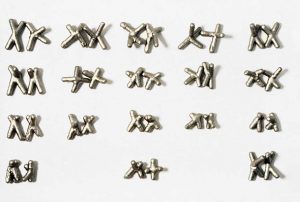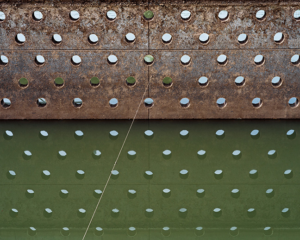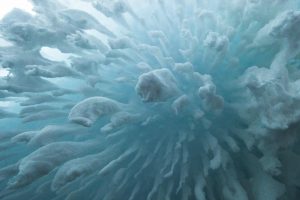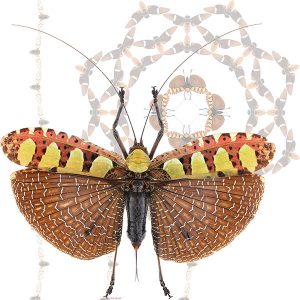Happy Earth Day!
On Earth Day (April 22), we are reminded of our responsibility to take care of the planet we call home. Through sustainable practices and clean energy solutions, we can ensure that future generations inherit a thriving ecosystem that works in tandem with modern technological advances.
There is a lot we can learn from the Maya people as holders of ancestral knowledge and stewards of the earth. From leading advocacy campaigns to sharing strategies that increase soil fertility and decrease erosion, their respectful and reciprocal relationship with nature has allowed them to conserve and protect their ancestral lands from threats like forest destruction and damaging resource extraction.
Regenerative agriculture, an Indigenous farming practice that can reverse climate change and increase biodiversity, can be traced back to how the Mesoamerican Mayan civilization utilized astronomical patterns to dictate the growing and harvesting of maize.
Our new exhibition, Popol Vuh: The Sacred Book of the Quiche through Illustration, features artwork inspired by a Mayan sacred text depicting the creation of the universe and all living things, including the all-important corn crop (even the first men in the creation myth were made from corn!).


Around AD 1000, in the present-day country of Guatemala, a highland Mayan people called the Quiche created a pictographic creation myth of the universe known as the Popol Vuh, or the Book of the Community, in which a pair of Hero Twins must descend into the Underworld to save the next and final generation of Humanity. It is the earliest body of literature in the Americas since its translation from the native Quiche language to Spanish in 1721 and, in terms of its breath of imagination and storytelling, is comparable to that of Homer’s Odyssey and the Epic of Gilgamesh.
Popol Vuh: The Sacred Book of the Quiche through Illustration is an exhibit that features a series of illustrations by artist Jaime Arredondo, with the artist’s hope to restore the former glory of the Popol Vuh and its creators to its deserved place in human history, in turn, leading to a greater awareness of the story, the art and culture of Native and Indigenous peoples.
Celebrate Earth Day with these additional exhibitions!
Nature’s Blueprints: Biomimicry in Art and Design
This exhibition brings together art and design with environmental science to show how the forms, patterns, and processes found in the natural world—refined by 3.8 billion years of evolution—can inspire our design of everything from raincoats to skyscrapers.

The State of Water
Guggenheim award-winning photographer Brad Temkin puts visitors face-to-face with the systems and techniques that deliver our most valuable natural resource. In doing so, the exhibition encourages us to see water conservation as a process we can all get involved in.

Walking in Antarctica
This interdisciplinary exhibition brings together photography, sculpture, and audio narrative to take the viewer on a journey through extraordinary Antarctic landscapes and explores the intersections between the natural world, the artistic process, and climate change discourse.

Small Wonders: Insects in Focus
By using cutting-edge technology and custom methods, artist Bob Sober created an exhibition of breathtaking beauty that allows viewers to see this hidden world like they’ve never seen it before. Small Wonders aims to inspire, in an artistic way, our natural curiosity to understand the form, function, and diversity of nature.

(Above Images: Jaime Arredondo, First There Were the Small Animals, 2010; printed reproduction of marker on paper, 14 x 14 inches (exact reproduction dimensions TBD); Courtesy of the artist.; Jaime Arredondo, The Hero Twins Rise Up to Become the Sun and Moon, 2019; printed reproduction of marker on paper, 14 x 14 inches (exact reproduction dimensions TBD); Courtesy of the artist.; Jaime Arredondo, The Tribes Hide Their Idols in the Forests and Jungles, 2019; printed reproduction of marker on paper, 14 x 14 inches (exact reproduction dimensions TBD); Courtesy of the artist.; Jaime Arredondo, “In the Beginning There was Nothing…” Tepeu/Gucumatz, 2010; printed reproduction of marker on paper, 14 x 14 inches (exact reproduction dimensions TBD); Courtesy of the artist.; Jaime Arredondo, The First Four Men are Made from Corn Part III, 2019; printed reproduction of marker on paper, 14 x 14 inches (exact reproduction dimensions TBD); Courtesy of the artist.; Courtesy of the artist.; Suzanne Anker, Fruit Bat from the series Zoosemiotics, 1993; Hydrocal and pigment, 29 x 55 x 4 inches; Courtesy of the artist; Brad Temkin, Fixing a Hole, Phoenix, Arizona, 2018; ink on paper, 20 x 25 inches; Courtesy of the artist.; Helen Glazer, Cloudburst, Erebus Ice Tongue Cave, Antarctica, 2015/2017; photograph, 26 3/4 x 40 inches (image), 36 x 49 inches (frame); Courtesy of the artist.; Bob Sober, Katydid (Sanaea regalis) Malaysia, 2013; digital image printed on aluminum, 40 x 60 inches; Courtesy of art’s IMPORTANT, LLC.)